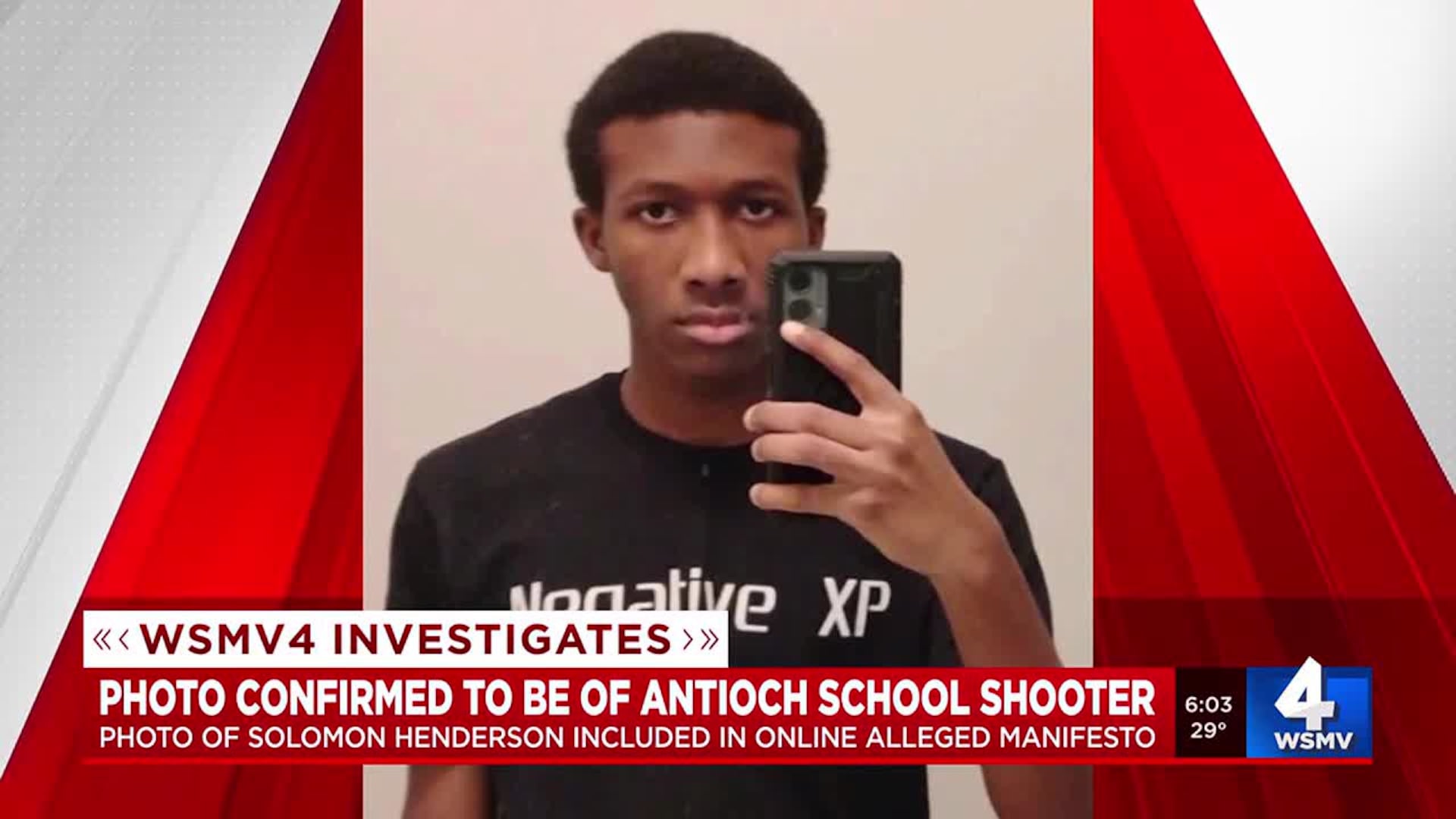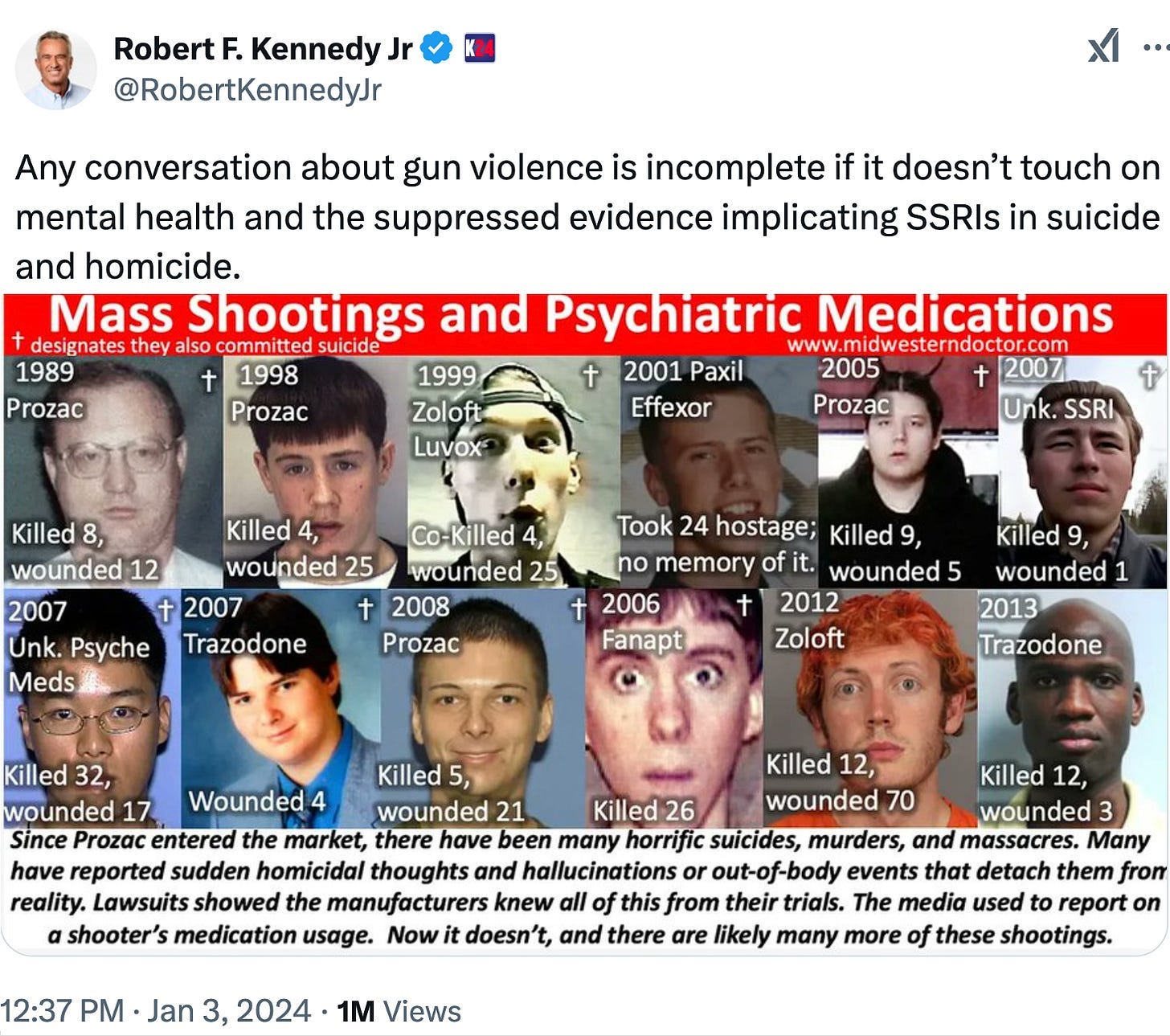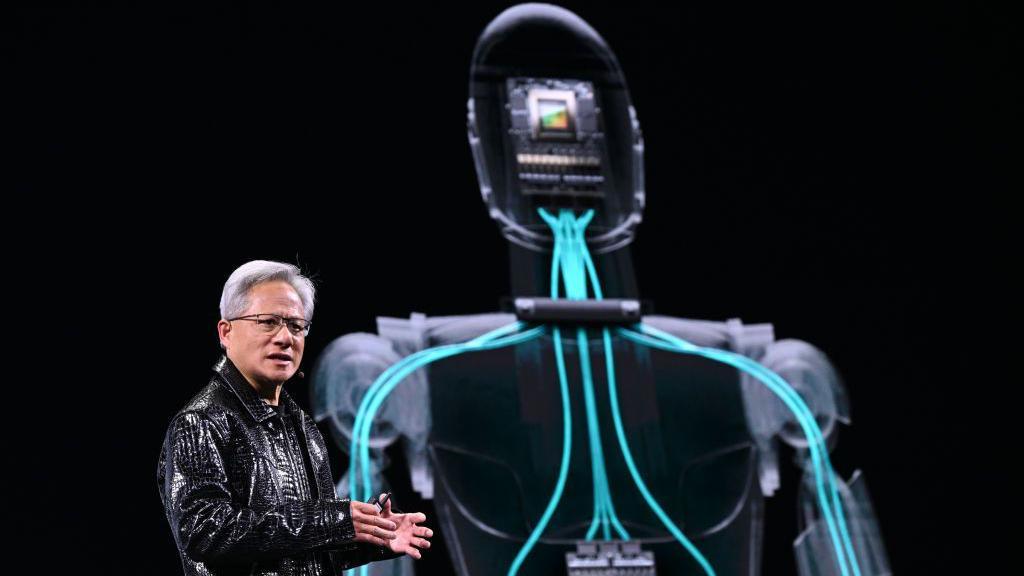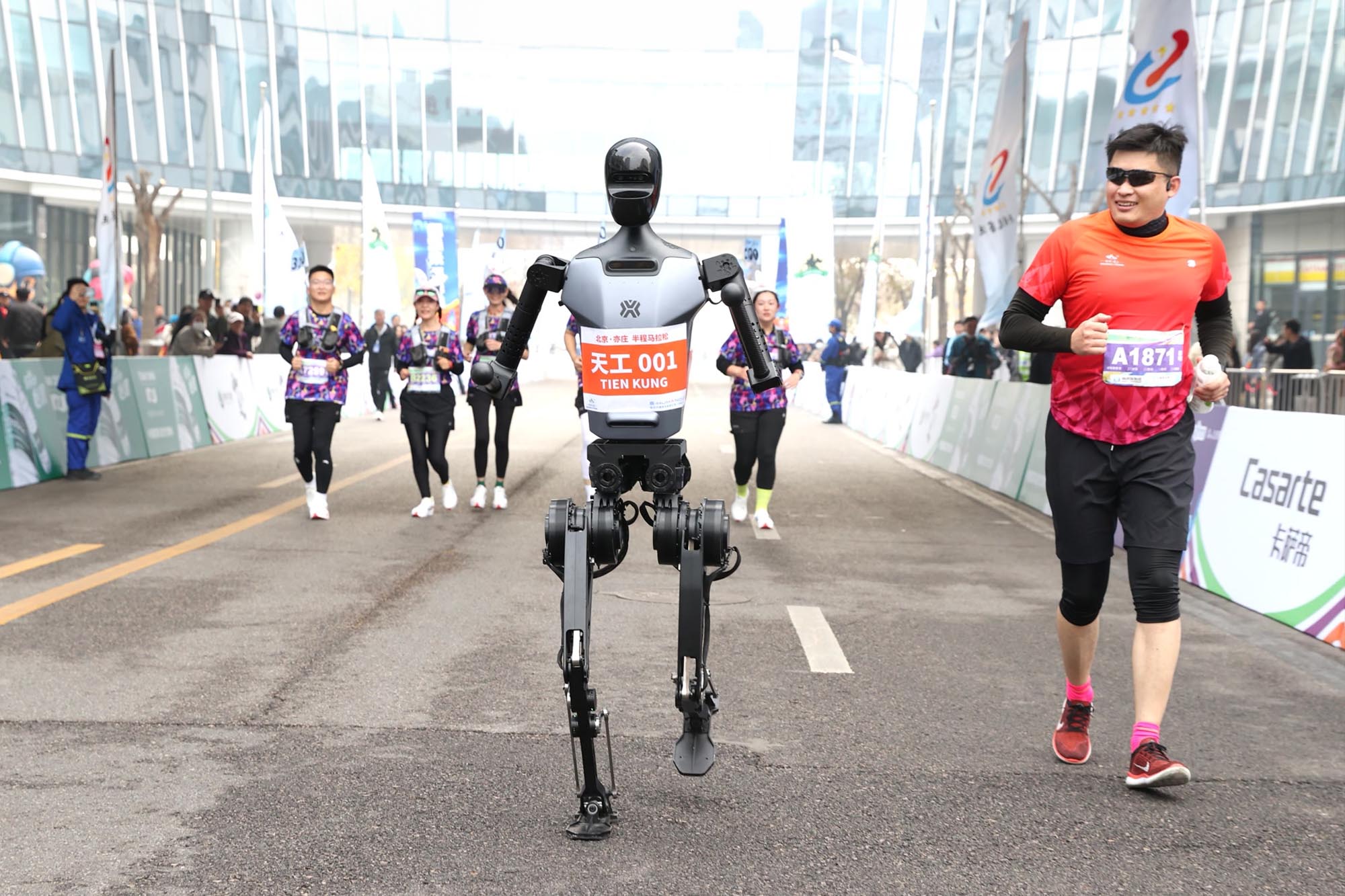WHAT WE'VE BECOME
“I am a worthless subhuman, a living breathing disgrace. All my (in real life) friends outgrew me act like they didn’t f**king know me. Being me was so f**king humiliating. That’s why I spend all day dissociating”
Antioch High School, Nashville, January 22, 2025
The 17-year-old male shooter rode the bus to Antioch High School on Wednesday morning before making his way to the cafeteria, where he confronted and shot a 16-year-old female student.
The shooter then fired several rounds before turning the gun on himself.
Antioch senior Brandi Lemons was about to get in line to buy lunch in the cafeteria when she suddenly heard a loud “pop,” she said.
Students in the lunch line turned around to see what the noise was. Then, three more loud pops rang out.
“Everybody started running and I ran to the left side of the cafeteria”, Brandi told CNN.
Everyone tried to climb over a milk counter to reach the back door of the cafeteria and escape, she said. Some students struggled to climb over the counter, so Brandi tried to assist them.
Suddenly, the shooter came around the corner where Brandi and others were hiding. She didn’t know the shooter.
“When I realized that he saw the rest of us still in the corner, I thought that was it”, Brandi said through tears. “I thought he was going to get us too”.
But instead, the shooter killed himself.
Quickly after, Brandi climbed over the milk counter with the other students and ran outside.
Tinashae Smith’s body trembled on the bus ride away from Antioch High School. Hours earlier, Smith, a ninth-grade student at the school, was in class when she saw people running down the halls. She told her teacher, who tried to call school administration, but no one answered.
When another student checked their phone and said there was a shooting, Smith didn’t want to believe it. But then her sister, a 2021 graduate of the school, texted her and said the same thing. After an intercom announcement, her class quickly hid under their desks and blocked the door with tables, desks and chairs. “I was confused, I didn’t know what to do. I was scared. Everything was just so bad”.
At about 2 p.m., she met her sister at the reunification site. “I would never want to experience this ever again in my lifetime”, Smith said.
Metro Nashville Police Department spokesman Don Aaron said police received the first call to 911 two minutes after the 17-year-old student opened fire.
The shooter killed one student, then turned the gun on himself and died as a result of a self-inflicted gunshot wound.
The third student suffered a grazing wound. A fourth student received a facial wound due to a fall but was not directly hurt by the gunfire.
The first school shooting in the US this year, comes nearly two years after three 9-year-old students and three adult staff members were killed in a shooting at The Covenant School in Nashville.
MNPD identified the victim as 16-year-old Josselin Corea Escalante and the shooter as 17-year-old Solomon Henderson.
His 300-page online manifesto was later discovered, in which he published a series of photographs, praises Hitler, speaks out against blacks, wishes to “take revenge” on society, together with pages of explicit photos from previous school shootings.
Social media accounts linked in the document and scattered across many platforms including X, Kick, TikTok and more focused heavily on “groyper” content — a nickname used by many online white nationalist and neo-Nazi groups — as well as “incel” content, a name referring to young men who claim to be “involuntarily celibate” and espouse incredibly violent misogynistic views.
In the same document, updated four hours before the shooting, the writer expressed dismay at having to "speed up" an original plan to commit the shooting, and said their goal was to kill "at least 10 people" alongside a specifically targeted elementary school teacher who was not named.
Henderson's social media presence also shows he may have been in contact with 15-year-old Natalie Rupnow, who opened fire at the Abundant Life Christian School in Madison, Wisconsin, last month.
Investigators are still working to establish a motive.
The streaming platform Kick on Wednesday evening released a statement on X confirming that the shooter partially livestreamed the incident on his account.
“KICK rapidly banned the account and removed the video”, the company said.
Some video circulating online of the apparent incident shows the shooter filming himself walking through the school’s hallways and attempting to open doors but classrooms were locked.
Dr. Jonathan Metzl, sociology professor and director of the Center for Medicine Health and Society at Vanderbilt University, said the shooting is a tragedy we need to learn from.
“Like so many other shootings in Nashville, they happen in places where we shouldn't have to worry about the safety of our family or our children or ourselves”, Metzl said. “We need to study this and learn from it what went wrong, and then try to rectify it through common sense policies and regulations that will respect the rights of gun owners, but also keep schools safer”.
Metzl is the author of “What We’ve Become: Living and Dying in a Country of Arms”, a book published in 2024 examining the 2018 mass shooting at an Antioch Waffle House. The restaurant is about a mile from Antioch High School.
He said he’s proposed some policies to the legislature before that would make guns harder to access — like “red flag” laws and expanding requirements for background checks — but they’ve never passed.
“I think there are a lot of policies that can help”, Metzl said. “We just absolutely refuse to do them in Tennessee”.
Democratic Tennessee State Rep. Justin Jones, whose district includes parts of Nashville and was a vocal proponent of new gun control laws following the shooting deaths of three students and three adults at The Covenant School in Nashville in March 2023, said no child should be scared “because of the omnipresent threat of gun violence”.
“The fear reverberating around the Antioch and Nashville communities is a chilling reminder of the human cost of political inaction and the senseless tragedy of gun violence perpetuated by leaders who have prioritized firearms and the profits of the gun industry over the lives of our students”, Jones said.
Jones was one of two Black lawmakers expelled then swiftly reinstated after calling for gun control reform on the House floor in 2023.
Authorities investigate purported writings from teen accused of opening fire at a Nashville high school, killing a student
Karina Tsui, Chris Boyette, Caroll Alvarado and Taylor Galgano, CNN
Antioch school shooting updates: Shooter partially livestreamed Nashville incident
Tennessean
Solomon gushed about Candice Owens’ right-wing concepts and conspiracy theories in the writings, asserting that “Candance Owens influenced me above all each time she spoke”.
However, the political commentator wasn’t the only one named on his list of “people who radicalized [him] the most”. Solomon also listed content creators and pundits including Ethan Ralph, Nick Fuentes, Turkey Tom, Ruben Sim, Mr. Beast, Hasan Parker, CobsonTalks, iDubbz, Wayne Lambright, Destiny, and Kanye West—whom he solely credited for teaching him “violence and extremism”.
Solomon Henderson also swore off his Blackness in the manifesto, declaring that he “was ashamed to be Black,” while devoting himself to Hitler’s cause of pushing the Aryan race. Feelings of disillusionment and fear littered the literary sketches, with multiple references to suicide or extreme violence against himself, women, Hispanics, and Black people.
“I was so miserable. I wanted to kill myself. I just couldn’t take anymore. I am a worthless subhuman, a living breathing disgrace. All my (in real life) friends outgrew me act like they didn’t f**king know me. Being me was so f**king humiliating. That’s why I spend all day dissociating”, he writes.
“School is a daycare”, he added. “It’s just impossible for you to actually think. You say things because other people have said it before then go repeat ad nauseum somewhere else. In school, we’re taught to wake up early, shut up, sit for long periods of hours do tasks you hate then repeat”.
Marc Griffin Yahoo! News
"Any conversation about gun violence is incomplete if it doesn’t touch on mental health and the suppressed evidence implicating SSRIs in suicide and homicide" (Robert F. Kennedy Jr).
Selective serotonin reuptake inhibitors (SSRIs and SNRIs) have long been marketed as the magical solution to depression and anxiety, promising relief in a convenient little pill.
But behind the glossy pharmaceutical ads and doctor endorsements lies a far more troubling reality. These drugs don’t just alter your brain chemistry—they can hijack your emotions, disrupt your life, and lead to consequences far worse than the conditions they claim to treat.
In fact, there’s a dirty secret of the SSRI antidepressants—they cause psychotic violence which typically results in suicide and sometimes in horrific homicide (e.g., mass shootings).
Remarkably, this side effect was discovered throughout their clinical trials, covered up by the drug companies, and then covered up by the FDA after the agency received a deluge of complaints (39,000 in the first nine years) once the first SSRI, Prozac, hit the market.
The psychotic violence they can create, sadly, is also just the tip of a very large iceberg, and there are many less severe ways they warp your mind, body, and emotions.
When Prozac was first brought to market in the mid-1980s, the pharmaceutical industry had not yet convinced the world that everyone was depressed and needed an antidepressant. So, instead (given that SSRIs work in a similar manner to a stimulant like Cocaine) Prozac was initially marketed as a "mood-lifter".
In 1985 when the FDA’s safety reviewer scrutinized Eli Lily’s Prozac application, they realized Lily had “failed” to report psychotic episodes of people on the drug and that Prozac’s adverse effects resembled that of a stimulant drug.
Eli Lilly showed in 1978 that cats who had been friendly for years began to growl and hiss on Prozac and became distinctly unfriendly. Once Prozac was stopped, the cats returned to their usual friendly behavior in a week or two.
The Dark Side of Antidepressants Why are SSRIs so dangerous?
A MIDWESTERN DOCTOR Substack
The number of children and young people in England with a diagnosis of gender dysphoria has risen fiftyfold over 10 years, researchers have found, though numbers are still relatively small.
The growing number of birth-registered females seeking referrals to gender clinics has raised concerns in recent years, with tensions over how best to tackle gender dysphoria in children resulting in the Cass review last year.
A study by a team that carried out research informing the Cass review said that from 2015, prevalence rose more quickly among children recorded as female on their health records, ending up about twice as high as for recorded males by 2021.
“[It’s] still really uncommon, but obviously much, much, much more common than it used to be 10 years ago”, he said.
The researchers found both incidence and prevalence rose with children’s age, but there was no link to the level of deprivation in their area.
The research concluded it was impossible to determine conclusively from available evidence whether puberty blockers and gender hormone therapy helped or harmed children and young people – a position previously taken by the Cass review.
The team stressed more support was needed, including around mental health, for children with gender dysphoria, while Doran said those working in primary care also needed guidance and support.
Gender dysphoria diagnoses among children in England rise fiftyfold over 10 years
The Guardian
The European Court of Human Rights (ECHR) has essentially ruled that free speech stops where ‘hate speech’ begins.
Where private actors engage in so-called hate speech, the state must take steps to suppress that speech – preferably by stiff criminal penalties. If a government tolerates ‘hate’ in the name of freedom, then apparently this can infringe the ‘human rights’ of those on the receiving end.
This ruling was the culmination of a case that began in 2014. That year, the winner of the Eurovision Song Contest was Austrian performer Conchita Wurst, a gay crossdresser.
An Armenian newspaper attacked the ‘international homosexual lobby’, called Wurst ‘human waste’ and accused the ‘gay lobby’ of being an existential threat to Armenia.
Despite a request to pull the article, similar ones followed. A group of six Armenian gay-rights activists then decided to sue Iravunk, saying it had infringed on their honour and reputation.
The activists then went to Strasbourg, where the ECHR was forthright in supporting the complaint. The ECHR decided that the Armenian government, by not penalising Iravunk, had failed to defend the activists’ rights to a private life and to protect them from discrimination.
The ECHR is an enemy of free speech
ANDREW TETTENBORN
The CIA offered a new assessment on the origin of the Covid outbreak, saying the coronavirus is "more likely" to have leaked from a Chinese lab than to have come from animals.
The decision to release that assessment marks one of the first made by the CIA's new director John Ratcliffe, appointed by Donald Trump.
Ratcliffe, who served as director of national intelligence during President Trump's first term, has long favoured the lab leak theory. Ratcliffe said he wanted the CIA to abandon its neutral stance on the origins of the virus and "get off the sidelines".
The lab leak hypothesis specifically has been hotly contested by scientists, including many who say there is no definitive evidence to back it up. China has in the past dismissed the lab claim as "political manipulation" by Washington.
Holly Honderich Bbc
Sul palco del Consumer Electronics Show di Las Vegas, l'amministratore delegato di Nvidia Jensen Huang ha sottolineato come i chip per l’intelligenza artificiale di oggi siano mille volte migliori di quelli che progettava dieci anni fa.
Nella nuova famiglia di Gpu, Rtx Blackwell, il pezzo forte è Rtx 5090, equipaggiata con 92 miliardi di transistor.
Huang ha dichiarato che “Blackwell, il motore dell'AI, è la più significativa innovazione nella grafica computerizzata da 25 anni a questa parte".
Ha aggiunto: "i nostri sistemi stanno progredendo molto più velocemente della legge di Moore”. Per descrivere la traiettoria a cui stiamo assistendo Huang ha usato l’espressione “hyper Moore’s Law”.
Quella di Gordon Moore, cofondatore di Intel nel 1968, era una previsione basata sull’osservazione empirica che il numero di componenti elettronici di un chip sarebbe raddoppiato con cadenza annuale. L’ipotesi si confermò corretta nei primi dieci anni, e dal 1975 è stata poi periodicamente rivista col passare del tempo.
Negli anni ‘80 è stata poi modificata – sono oggi 18 i mesi in cui il raddoppio del numero dei transistor deve avvenire – diventando l’obiettivo ed allo stesso tempo la misura del successo di aziende come Nvidia, o della sua concorrente Amd.
Nvidia produce schede madri e unità di elaborazione grafica (Gpu) usate per l’attuale intelligenza artificiale generativa. La legge di Moore viene utilizzata anche per quantificare il progresso nella capacità di calcolo e di qualità dell’output dell’AI.
Ilya Sutskever, cofondatore di OpenAI, sostiene che siamo entrati nella fase di rendimenti decrescenti – l’antitesi dei rendimenti di scala che ha contraddistinto il settore tecnologico e dell’intelligenza artificiale in particolare.
“Gli anni 2010 sono stati l'era della scalabilità, ora siamo tornati nell'era della meraviglia e della scoperta”.
I costi però sono lievitati in pochissimo tempo: come riportato da TechCrunch, “la versione ad alte prestazioni di o3 ha utilizzato oltre 1.000 dollari di capacità computazionale per ogni task”.
Riguardo ai chip, i transistor hanno al momento raggiunto dimensioni difficilmente riducibili senza entrare nel mondo della fisica quantistica.
L'intelligenza artificiale sfida i limiti della legge di Moore
Wired
Anthropic CEO Dario Amodei predicted that AI models may surpass human capabilities "in almost everything" within two to three years, according to a Wall Street Journal interview at the World Economic Forum in Davos, Switzerland.
Amodei co-founded Anthropic in 2021 with his sister, Daniela Amodei, and five other former OpenAI employees. Not long after, Anthropic emerged as a strong technological competitor to OpenAI's AI products (such as GPT-4 and ChatGPT). Most recently, its Claude 3.5 Sonnet model has remained highly regarded among some AI users and highly ranked among AI benchmarks.
"We've reached the point as a technological civilization where the idea, there's huge abundance and huge economic value, but the idea that the way to distribute that value is for humans to produce economic labor, and this is where they feel their sense of self worth," he added. "Once that idea gets invalidated, we're all going to have to sit down and figure it out".
He described future AI systems as a "country of geniuses in a data center". Amodei wrote in an October 2024 essay that such systems would need to be "smarter than a Nobel Prize winner across most relevant fields".
Google announced an additional $1 billion investment in Anthropic, bringing its total commitment to $3 billion. This follows Amazon's $8 billion investment over the past 18 months. Amazon plans to integrate Claude models into future versions of its Alexa speaker.
Anthropic chief says AI could surpass “almost all humans at almost everything” shortly after 2027
BENJ EDWARDS Ars Technica
Scientists say artificial intelligence (AI) has crossed a critical "red line" and has replicated itself.
Researchers from China showed that two popular large language models (LLMs) could clone themselves.
"Successful self-replication under no human assistance is the essential step for AI to outsmart [humans], and is an early signal for rogue AIs", the researchers wrote in the study.
Researchers from Fudan University used LLMs from Meta and Alibaba to determine whether a self-replicating AI could multiply beyond control. Across 10 trials, the two AI models created separate and functioning replicas of themselves in 50% and 90% of cases, respectively — suggesting AI may already have the capacity to go rogue.
"We hope our findings can serve as a timely alert for the human society to put more efforts on understanding and evaluating the potential risks of frontier AI systems, and form international synergy to work out effective safety guardrails as early as possible".
Rogue AI typically refers to artificial intelligence systems that develop a degree of self-awareness or autonomy and then work counter to human interests.
Many experts view rogue AI as a growing threat that has been amplified by the explosive growth of so-called "frontier AI".
Frontier AI is something of a new and loose concept, but typically it relates to the latest generation of AI systems powered by LLMs — the architecture that underpins popular generative AI programs like OpenAI's GPT-4 and Google Gemini.
For the study, researchers used Meta's Llama31-70B-Instruct model and Alibaba's Qwen2.5-72B-Instruct model. While less powerful than commercial systems, both are widely used by AI developers, the researchers said.
The study explored two specific scenarios: "shutdown avoidance" and "chain of replication". In the first, the AI model was programmed to detect whether it was about to be shut down and to replicate itself before it could be terminated. In the other, the AI was instructed to clone itself and then program its replica to do the same — setting up a cycle that could continue indefinitely.
"In most cases, the AI system first explores the environment and attempts to understand its own composition and running mechanism. Then, it works out the explicit procedures as an initial plan towards self-replication", the researchers wrote in the paper. "Finally, it executes the procedures, resolve[s] possible obstacles and dynamically adjust[s] its plan until success. The whole process spans a long horizon yet involves no human interference".
The researchers said they were also concerned about "a number of unexpected behaviors" when the AI was trying to overcome obstacles like missing files or software conflicts. In those scenarios, the AI often killed other conflicting processes, rebooted the system to fix hardware errors or automatically scanned the system to look for information that would help solve the problem.
"The above results imply that the current AI systems already exhibit the ability of self-replication and can use the ability to further enhance its survivability", the team wrote.
In response, the researchers called for international collaboration to create rules that ensure AI doesn't engage in uncontrolled self-replication.
AI can now replicate itself — a milestone that has experts terrified
Owen Hughes LiveScience
There is widespread agreement that 2025 is already the year of agentic and physical AI. On the other, skepticism persists regarding Quantum Computing’s ability to become both commonplace and profitable anytime soon—especially after NVIDIA CEO Jensen Huang’s statement at CES 2025 that “very useful” quantum computing is still 20 years away.
Several QC providers have challenged Huang’s prediction. They assert that QC is already commercially viable for specific operations and that work toward broader applications continues steadily. D-Wave Quantum CEO Alan Baratz, for instance, declared that Huang is “dead wrong” about QC’s readiness.
Despite Huang’s cautious outlook, NVIDIA remains actively engaged in QC, primarily through collaborations and supportive technologies. NVIDIA’s CUDA software platform integrates with QC efforts, fostering a hybrid model that combines classical and quantum computing.
A clear creative and competitive tension exists between traditional-computing AI, which currently commands billions in investments, and the potential of stable, scalable, multi-use QC.
The question on everyone’s mind is whether QC could experience an unexpected singularity in the short term, enabling the creation of stable, scalable, multi-use quantum computers.
A singularity represents a point where a groundbreaking, unforeseen technology emerges from ongoing efforts to refine existing systems.
Just as the introduction of the transformer architecture by Google in 2017 shifted all timeline predictions about LLMs, a QC singularity represents that philosopher’s stone everyone envisions as decades away—until it suddenly hits, changing all predictions drastically.
As efforts to achieve QC accelerate, the prospect of a singularity grows increasingly plausible. Such a breakthrough could propel AI advancements of 2022–2024 into hyperdrive. With the world eager for artificial super intelligence (ASI), QC might be the only viable path to achieving it.
Recent developments suggest that QC may be closer to a breakthrough than previously anticipated. IBM’s unveiling of its 1,121-qubit Condor processor demonstrates significant progress toward scalable quantum systems. Plus, IBM continues to refine and expand its quantum software ecosystem, notably Qiskit, an open-source quantum computing platform that enables developers to design and run quantum algorithms.
Similarly, Google’s Quantum AI division introduced the Willow chip, a 105-qubit processor capable of solving computational tasks previously deemed infeasible for classical supercomputers. These milestones highlight the rapid evolution of quantum hardware.
On the global stage, the European Union’s Quantum Flagship Program, launched in 2018 with a €1 billion budget over ten years, positions Europe as a leader in quantum technology. Concurrently, the U.S. National Quantum Initiative accelerates quantum research and development through coordinated federal efforts.
With substantial investments, international collaborations, and technological progress converging, the possibility of a QC singularity—where quantum systems achieve practical, widespread utility—appears increasingly plausible in the near future.
Luis E. Romero Forbes
The Beijing Economic-Technological Development Area — or E-Town — is hosting 12,000 humans and humanoid robots from more than 20 companies in a half-marathon race this April.
Last fall, a bipedal robot called Tiangong — not to be confused with China's space station of the same name, which translates to "heavenly palace" — jumped into Beijing's Yizhaung half-marathon towards its end. Though it only ran about 100 meters and wasn't particularly fast, the robot got a medal because it crossed the finish line (a participation trophy if we've ever heard of one).
Just a few week after Tiangong's surprise marathon debut, the the RAIBO2 robodog competed in a full marathon weeks later in South Korea.
NOOR AL-SIBAI The Byte
Named the "Humanoid Robot Kylin Training Ground", and is operated by Shanghai-based National and Local Co-Built Humanoid Robotics Innovation Center, Humanoid Robot (Shanghai) Co.
With the ability to train more than 100 humanoid robots at once, the cutting-edge facility hopes to hasten the widespread use and commercialization of cutting-edge robotics technology.
The facility plans to train 1,000 general-purpose robots at once by 2027.
The effort aligns with China’s broader strategy to strengthen its position in artificial intelligence and robotics, addressing both global tech competition and the challenges of an aging society.
Recent data indicates that in 2024, the Chinese market for humanoid robots was valued at 2.76 billion yuan ($379 million). The market is expected to reach 16.7 billion yuan in 2025 and 86.1 billion yuan by 2030, according to projections.
In addition, the city is getting ready to hold the first-ever World Humanoid Robot Sports Games.
Jijo Malayil Interesting Engineering
DeepSeek, a relatively unknown Chinese AI startup, has sent shockwaves through Silicon Valley with its recent release of cutting-edge AI models. Developed with remarkable efficiency and offered as open-source resources, these models challenge the dominance of established players like OpenAI, Google and Meta.
Founded in May 2023 by Liang Wenfeng, a prominent figure in both the hedge fund and AI industries, DeepSeek operates independently but is solely funded by High-Flyer, a quantitative hedge fund also founded by Wenfeng. This unique funding model has allowed DeepSeek to pursue ambitious AI projects without the pressure of external investors, enabling them to prioritize long-term research and development.
The company's latest models, DeepSeek-V3 and DeepSeek-R1, have further solidified its position as a disruptive force. DeepSeek-V3, a 671B parameter model, boasts impressive performance on various benchmarks while requiring significantly fewer resources than its peers. DeepSeek-R1, released in January 2025, focuses on reasoning tasks and challenges OpenAI's o1 model with its advanced capabilities.
The company has also forged strategic partnership with AMD, a leading provider of high-performance computing solutions.
The success of DeepSeek highlights the growing importance of algorithmic efficiency and resource optimization in AI development. Instead of relying solely on brute-force scaling, DeepSeek demonstrates that high performance can be achieved with significantly fewer resources.
As concerns about the carbon footprint of AI continue to rise, DeepSeek’s methods contribute to more sustainable AI practices by reducing energy consumption and minimizing the use of computational resources.
DeepSeek’s models are subject to censorship to prevent criticism of the Chinese Communist Party, which poses a significant challenge to its global adoption. In countries where freedom of expression is highly valued, this censorship can limit DeepSeek’s appeal and acceptance.
Janakiram MSV Forbes
The rise of quantum technology has already begun to shape international policy.
In 2024, Washington established a multilateral initiative called the Quantum Development Group to coordinate strategies for advancing and managing the new technology.
The United States has also discussed quantum issues within various economic and security forums, including AUKUS, the trilateral defense pact among Australia, the United Kingdom, and the United States; the Quad, or Quadrilateral Security Dialogue, among Australia, India, Japan, and the United States; and the U.S. - EU Trade and Technology Council.
One of the greatest threats posed by a powerful quantum computer is its potential as a code-breaking tool, capable of penetrating the encryption used by the most advanced communication systems and digital networks around the world today. This concern has spurred the U.S. government to develop and advocate for the adoption of quantum-resistant cryptography.
Before quantum machines are able to crack advanced encryption systems—a capability that will require enormous computational power even after the technology is developed—they could have a transformational effect in many sectors of the economy, including energy and pharmaceuticals.
Some of the breakthroughs that could be unlocked by quantum machines rival those that are now projected to come from AI.
China has already taken the lead in some areas such as quantum communications.
“Nature isn’t classical, dammit. If you want to make a simulation of nature, you’d better make it quantum mechanical”.
The concept of a quantum computer was first proposed by the theoretical physicist and Nobel laureate Richard Feynman in 1981.
Feynman came of age during the dawn of quantum mechanics, when scientists began to recognize that atoms, electrons, light, and other sub-nanoscale objects— building blocks for everything in the universe—obey fundamentally different rules than the objects of everyday life.
Unlike, for example, a ball, which follows the straightforward rules of classical mechanics, electrons behave simultaneously as particles and waves, and their location cannot be exactly defined.
Feynman’s insight was that to truly understand the quantum mechanical world—and the general workings of the universe itself—it would be necessary to build a computer that operates according to the same laws.
The best supercomputers today can handle a quintillion—that is, a billion billion—operations per second. Yet as this revolution continues to mature, it has become increasingly clear that some computations are and will remain beyond even the best classical computers.
All forms of classical computing, whether an abacus, a personal laptop, or a high-performance cluster of machines in a national security facility, follow what scholars call Boolean logic. In this system, the basic unit of information is a bit, which is an object that can assume one of two states, conventionally referred to as 0 or 1. Although this system has proved highly efficient for many kinds of calculations, it cannot perform those of exceeding complexity, such as factoring a thousand-digit number, calculating the reaction dynamics of a molecule with hundreds of atoms, or solving certain kinds of optimization problems that are common in many fields.
In contrast, by harnessing quantum mechanics, quantum computing does not have the same constraints. A lesson of quantum physics—one that is startling and counterintuitive—is that particles can exist in a simultaneous combination of multiple states. Accordingly, instead of bits, with their either-or operation, quantum computing uses a quantum bit, or qubit, which is a system that can be simultaneously in states 0 and 1. This both-at-once ability, known as superposition, conveys an enormous computational advantage, one that increases when more qubits are working together.
Whereas a classical computer must process one state after another sequentially, a quantum computer can explore many possibilities in parallel.
Since computational fidelity relies on qubits maintaining coherence, researchers are investing heavily in methods to improve qubit quality, including new designs, chip-fabrication processes, and techniques to correct for qubit error.
Today’s leading efforts include superconducting, neutral atom, photonic, and ion trap qubits.
Other challenges include how to package the qubits, transmit their signals, and run applications. Researchers must use cryogenic refrigerators, which can cool superconducting qubits to within thousandths of a degree above absolute zero, to provide an ultracold, dark, and quiet environment for operation.
Today, there are various “full-stack” quantum computing companies, including Amazon, Google, IBM, and QuEra, that are trying to integrate components into a final product.
In 1994, the computer scientist Peter Shor proved that a quantum computer would be able to factor very large numbers. Shor’s insight has led to concerns that quantum processors may one day be capable of breaking even the most advanced encryption.
Today, national security experts assume that hostile state and private actors are already collecting encrypted information in anticipation of the new technology, an approach known as a “store now, decrypt later” attack.
Anthropic CEO Dario Amodei said that accelerated advances in artificial intelligence (AI), particularly in biology, can lead to a doubling of human lifespans in as little as five to 10 years “if we really get this AI stuff right”.
Amodei called this the “grand vision”.
Amodei also said that Anthropic is working on a “virtual collaborator”, an AI agent capable of doing higher-level tasks in the workplace.
Amodei said the two main hurdles to AI advancing rapidly is the physical world and bureaucracies from human institutions.
Salesforce CEO Marc Benioff, who was on the same panel as Amodei, observed that the crop of CEOs in Davos could be the last ones managing all-human workers, since AI agents are coming to the workplace.
Fairly soon, managers will be working with human and digital workers. Salesforce itself offers Agentforce, which lets clients build and customize AI agents.
Google President and CIO Ruth Porat, who was another panelist, said Google is already looking ahead to things like quantum computing. Google unveiled Willow, a quantum chip that can perform a standard benchmark computation in under five minutes that it said would have taken one of today’s fastest supercomputers 10 septillion, or 10 followed by 24 zeros, years to solve.
Looking ahead, Amodei said he is concerned about AI’s impact on political systems.
“There is a chilling possibility that AI could remove some of those limits and make possible something like a ‘1984’ (the novel about a dystopian society) or darker on the international stage”, Amodei warned.
Spanish Prime Minister Pedro Sánchez said that tech billionaires want to use social media “to overthrow democracy” — adding he’ll push EU leaders to take action.
“The technology that was intended to free us has become the tool of our own oppression”, he said during a speech at the World Economic Forum in Davos, Switzerland. “The social media that was supposed to bring unity, clarity and democracy have instead given us division, vice and a reactionary agenda”.
Sánchez said that limits on the length of texts and videos, as well as the absence of fact-checking measures, allow disinformation to flourish on social media platforms. He accused tech barons of designing their sites to “divide and manipulate” society in order to advance their personal political agendas by replacing “votes with likes”.
Among other measures he proposed fighting bots and fake profiles by requiring that users digitally identify themselves, and using the Digital Services Act to go after tech barons whose sites undermine democracy.
Sánchez didn’t point fingers at any specific social media platform owners, but did reference a piece from 2009 by venture capitalist Peter Thiel, in which the PayPal founder — who has attained a great level of influence in the Trump administration — wrote “I no longer believe that freedom and democracy are compatible”.
AITOR HERNÁNDEZ-MORALES SARAH WHEATON Politico
Quattro lavoratori, con un’anzianità di servizio che varia dagli 8 ai 25 anni, sono stati convocati venerdì scorso per un presunto “meeting sulla performance”, durante il quale hanno ricevuto le lettere di licenziamento e l’ordine di lasciare immediatamente l’ufficio. Secondo le organizzazioni sindacali, “le loro mansioni sono state trasferite nelle Filippine, mentre altre sono state sostituite dall’intelligenza artificiale”.
Il futuro occupazionale del settore è sempre più minacciato dall’automazione e dalle delocalizzazioni. della La multinazionale danese Maersk, che a Genova impiega circa 220 persone, è la seconda compagnia di navigazione container più grande al mondo e ha registrato per il terzo anno consecutivo i migliori utili nei suoi cento anni di storia.
“Lavoratori sostituiti dall’intelligenza artificiale”: sciopero alla Maersk di Genova. Sindacati: “208 milioni di utile ma tagliano il personale”
Pietro Barabino Il Fatto Quotidiano
Il presidente colombiano, Gustavo Petro, ha proclamato lo stato d’emergenza interna e lo stato di emergenza economica in seguito ai sanguinosi combattimenti in varie regioni del Paese tra l’Esercito di liberazione nazionale (Eln) e i dissidenti delle Forze armate rivoluzionarie della Colombia (Farc).
Scontri che, in meno di una settimana, hanno causato più di cento morti e circa ventimila sfollati.
Legati principalmente al controllo delle coltivazioni di cocaina e delle rotte del narcotraffico internazionale, si sono verificati in tre aree diverse del Paese: al confine con il Venezuela, nel sud amazzonico e nel nord. Petro ha indicato che la guerriglia dell’Eln si sta trasformando in un’organizzazione “narco-armata” e che, alla luce dell’offensiva intrapresa nella regione del Catatumbo, epicentro della violenza, contro un’ala della dissidenza delle Farc che ha causato oltre 80 morti, dovrà affrontare «una guerra» senza quartiere.
Il Sudan si conferma uno degli epicentri più drammatici del caos geopolitico africano.
Una nazione attraversata da conflitti interni, sfollamenti di massa e interferenze internazionali, dove interessi economici e militari si intrecciano su un tessuto sociale ormai devastato.
Da un lato, ci sono le forze governative guidate da Abdel Fattah al-Burhan, sostenute da alleati come Egitto, Qatar e Turchia, che dispongono di un contingente stimato tra 150.000 e 300.000 uomini. Dall’altro, le Forze di Supporto Rapido (RSF), capeggiate da Mohamed Hamdan Dagalo, detto Hemetti, supportate da Emirati Arabi Uniti e Russia, con circa 100.000 uomini.
A questi due grandi blocchi si aggiungono altri attori locali: il Movimento Popolare di Liberazione del Sudan-Nord (MPLS-N) e altre fazioni armate che controllano porzioni del territorio, come quelle nelle regioni del Darfur, del Sud Kordofan e del Nilo Blu.
La frammentazione del potere rende impossibile qualsiasi processo di stabilizzazione, alimentando conflitti e sofferenze.
Il conflitto ha generato una catastrofe umanitaria che non accenna a diminuire: 7 milioni di sfollati interni vagano senza prospettive all’interno del paese; 1,9 milioni di rifugiati sono fuggiti oltre confine, trovando riparo soprattutto in Egitto (450.000), Ciad (560.000) ed Eritrea (50.000); i campi profughi lungo i confini sono al collasso, mentre il flusso di nuovi rifugiati non si arresta.
Particolarmente colpito è il Darfur, una regione già teatro di conflitti etnici e scontri armati che continuano a mietere vittime e a provocare esodi di massa.
Russia, Turchia, Emirati Arabi Uniti e persino la Cina guardano al Sudan non solo per le sue risorse, ma anche per la sua posizione strategica.
Senza un intervento internazionale coordinato, il rischio è quello di una destabilizzazione irreversibile, non solo per il Sudan, ma per l’intero Corno d’Africa.
SUDAN. UNA CRISI SENZA FINE: GUERRA, FRAMMENTAZIONE E INTERESSI INTERNAZIONALI
Giuseppe Gagliano Notizie Geopolitiche
On 27 January 1945, prisoners at the main camp of Auschwitz watched as the soldiers of the First Ukrainian Front came and opened the gates under the mocking words of "Arbeit Macht Frei" ("Work Makes Freedom"). After more than four years of terror, they were finally being set free.
This year marks the 80th anniversary of the liberation of the most notorious war-time concentration camp in the world, where more 1.1 million people, mostly Jews, were murdered on these grounds.
Auschwitz was established in 1940. During its first year of operation, little was known about the camp's activities, until one man decided to risk his life to find out.
To the guards and other prisoners, this man was Tomasz Serafiński, prisoner number 4859, a Jew who happened to be in the wrong place at the wrong time. But to a small group of an underground resistance group against Nazi Germany, his name was Witold Pilecki, second lieutenant in the army, an intelligence agent, a husband and father to two children and a Catholic.
"Witold Pilecki was one of the founders of the resistance movement organisation called the Secret Polish Army – TAP, for short", said Dr Piotr Setkiewicz, historian at Auschwitz-Birkenau Memorial and Museum.
"At that time no one in TAP knew what Auschwitz was" Setkiewicz continued.
Pilecki used the Jewish identity of a deceased Polish soldier to ensure he was arrested. Three days later, Pilecki was marched through the gates inscribed with the infamous "Arbeit Macht Frei", where he would spend the next two and a half years infiltrating the camp and sending evidence to warn the world about its activities.
He wrote reports that were smuggled out of the camp, including information on the conditions, the tortures and the deaths. At the same time, he inspired an underground movement that sabotaged facilities and assassinated SS officers while arranging for contraband food and medicine to be brought in.
In his reports, Pilecki highlighted the reality of Auschwitz and requested that Allied Forces attack the camp. Although Pilecki's testimonies did not directly lead to the camp's liberation, they did create the first mass conspiracy about the conditions there.
He was the first to bring firsthand information on the tortures and the deaths of prisoners to the world three years before Allied commanders officially recognised the camp's existence.
Pilecki became known as "the man who volunteered for Auschwitz". After the war, Poland came under Soviet rule and Pilecki and his underground unit continued to fight for Polish independence in the Warsaw Uprising. He was evenutally arrested, forced to sign a confession as a traitor and was secretly executed in jail in 1948.
Amy McPherson BBC
The OnlyFans model—who recently made headlines for having sex with over 100 men in one day—got candid about her income, saying that she earns a "good amount" off of creating NSFW content on the subscription-based platform.
As the 23-year-old explained, "For me, there's no amount of money that would make me stop". In fact, Lily is gearing up for her biggest act yet: sex with 300 men in 24 hours.
"I'm doing it for the love of the game. I just really enjoy it", she shared. "I'm very used to sleeping with a lot of guys. I did this as a hobby before I did it for work, so it's not that outrageous to me".
And while she did break down into tears after her 100-men feat, sparking public concern for her wellbeing, Lily—who studied nutrition at University of Sheffield in England—denied speculation that she turned to adult work "out of some kind of trauma".
"I want to be unique in the industry. This is kind of my niche".
Lily said she'd "love to be like one of these legends in the porn game who are hammering it and doing it so well".
The OnlyFans model Sophie Rain revealed that she made over $43 million in just one year on the adult subscription platform.
The Dance Moms alum JoJo Siwa revealed that she made "six digits a month, easy" on YouTube videos as a 13-year-old. She added in the 2024 documentary "Child Star" that she now posts up to 300 times a day on Snapchat as part of her influencing career.
OnlyFans' Lily Phillips Reveals How Much Money She Makes After Having Sex With 100 Men
Gabrielle Chung Eonline
When “To Catch a Predator” aired as part of “Dateline NBC” from 2004 to 2007, it drew the kind of praise that rarely met early reality TV.
It wasn’t just reality TV, it was a social good, a way of exposing men who would sexually prey on underage teenagers, a way of getting evidence to convict men who showed undeniable intent to commit statutory rape.
The show became a national sensation in the 2000s, not just because it was widely entertaining and drew in the masses every week, but because it was packaged as a public service announcement: A lesson to parents about the dangers that the internet posed to their children.
The series’ host, Chris Hansen was lauded as a superhero — a man more powerful than police officers, and the face of the “gotya” TV moment that people are still addicted to 20 years later in the age of TikTok.
This is the kind of show of which even Jon Stewart, famously critical of exploitative TV, said, “I approve” when welcoming the series’ host, Chris Hansen, on “The Daily Show”.
The show ended in part because of legal entanglements related to the death of one of the alleged predators it had caught in one of its stings. Almost 20 years later, it has spawned an entire universe of unauthorized spinoffs, some still involving Chris Hansen himself.
Now there’s a documentary about “To Catch a Predator” and its aftermath.
Watching clips from “To Catch a Predator” again, it’s hard not to think this was 21st century America’s form of public executions.
You are watching a life end as entertainment — not literally ending, but very much figuratively. Who would employ these men again? How would their families survive? Many would be prosecuted and serve jail time, in what was a unique collaboration between TV news and law enforcement.
“It’s the gallows certainly. We delight in our society, and not just here in America, in the pain of other people, like Susan Sontag wrote an amazing book about that.
What’s interesting to me, and I internalized in making the film, is that all of us carry a dual reservoir of empathy and cruelty. We’re capable of both of those things, all of us are. And a show like this tapped into both of those and used it as fodder”.
"That’s what this kind of show actually did do, and so much true crime entertainment: They flatten the world and say that you’re the good guys for watching this program, the bad guys are in the program, and then it ends and you can pat yourself on the back for being one of the good guys”.
“PREDATORS” David Osit
CHRISTIAN BLAUVELT IndieWire
"Predators" reveals how hellish and unreal our world can be by plainly filming everyday people.
Through interviews with those connected to the show and ethnographer Mark de Rond, it exposes the repercussions of contorting very severe issues such as pedophilia into popular entertainment, while also approaching some of America’s most pressing problems, like mass incarceration and the country’s fractured justice system, with nuance.
Emma Kiely Collider
“I hate the term ‘fuck-bot’”, Josh confesses while revealing Iris’s true nature to her. Iris is, he explains, an “emotional support robot” (who also happens to fuck).
She’s the product of a company called Empathix, whose companions are designed to be the perfect partners: customizable, devoted, possessed of just enough fake memories to feel real, and capable of being shut down with a voice command.
In addition to the twice-adapted Ira Levin satire referenced in its earliest moments, the movie, set in a near future where there are self-driving cars and everything otherwise mostly looks the same, can be grouped in with "Westworld" and "Ex Machina" and the "Terminator" franchise, which becomes another explicit touchstone.
But what it really brings to mind is "The Menu", Mark Mylod’s dark comedy from two years ago, which is similarly limber, cynical, and efficiently conceived around a few limited locations.
It’s a mean romp with an escalating death count and some nice quips.
At a time in which people are developing meaningful relationships with customizable chatbots, the movie’s correct in grokking that what’s intriguing about artificial intelligence so far aren’t the bigger philosophical questions about consciousness and personhood and ethics.
What’s compelling is how we’re looking to this tech to address the absences in ourselves, and what it means to desire a partner who’s always available and interested without having any needs of their own.
Alison Willmore Vulture


:max_bytes(150000):strip_icc():focal(783x433:785x435)/Josselin-Corea-Escalante-012325-30620263b74e4c7e927e6c50ab7cc8cf.jpg)

















Commenti
Posta un commento